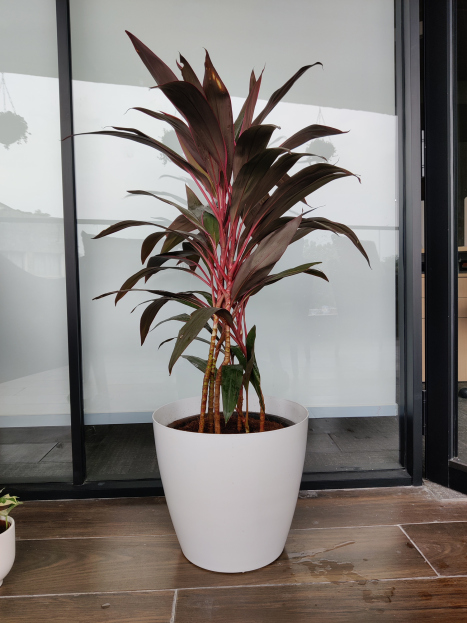
With its bold, sword-shaped leaves in vibrant shades of red, pink, and burgundy, Cordyline fruticosa ‘Red’ is a showstopper. Often called Ti Plant, this tropical beauty adds instant colour and drama to any indoor or outdoor space.
Whether you’re a seasoned plant parent or just getting started, here's how to keep your Cordyline ‘Red’ thriving.
Cordyline ‘Red’ loves bright, indirect light. A few hours of gentle morning sun can enhance its leaf colour, but harsh direct sun (especially in the afternoon) can scorch the foliage. If kept in low light, the vibrant colours may fade to green, so aim for a bright spot near a window.
Water your Cordyline when the top 1–2 inches of soil feel dry. It prefers evenly moist (but not soggy) soil. Avoid letting the pot sit in water, as this can lead to root rot. Use room-temperature, chlorine-free water if possible—Cordylines can be sensitive to chemicals in tap water.
Use a well-draining potting mix rich in organic matter. A general-purpose tropical soil or a mix of peat, perlite, and compost works well. Make sure the pot has drainage holes to prevent waterlogging. Repot every 1–2 years or when roots become crowded.
Cordyline ‘Red’ thrives in warm temperatures between 65–85°F (18–29°C). Avoid exposure to cold drafts or temperatures below 55°F (13°C). If you’re growing it outdoors, bring it inside before the first frost.
As a tropical plant, it prefers high humidity. Dry indoor air—especially in winter—can lead to browning tips. Increase humidity with a humidifier, pebble tray, or by grouping plants together. Occasional misting also helps, but it's not enough on its own in very dry environments.
Cordyline is typically propagated via stem cuttings or air layering. Cut a healthy stem with at least one leaf node, let it callous for a few hours, and plant it in moist potting mix. Keep warm and humid until new growth appears.
Unfortunately, Cordyline is toxic to pets (especially cats and dogs) if ingested. Keep it out of reach of curious animals and monitor for any nibbling.
Feed your Cordyline every 4–6 weeks during the growing season (spring through early fall) with a balanced liquid fertilizer. Reduce feeding in the winter when the plant is not actively growing.
Usually a sign of low humidity, underwatering, or fluoride/chlorine in tap water.
Yes, in warm climates or during summer. It loves heat and humidity but must be protected from frost.
Insufficient light is the most common cause. Move your plant to a brighter spot with filtered sunlight.
Yes! Prune tall or leggy stems to encourage fuller, bushier growth. New shoots will emerge below the cut.